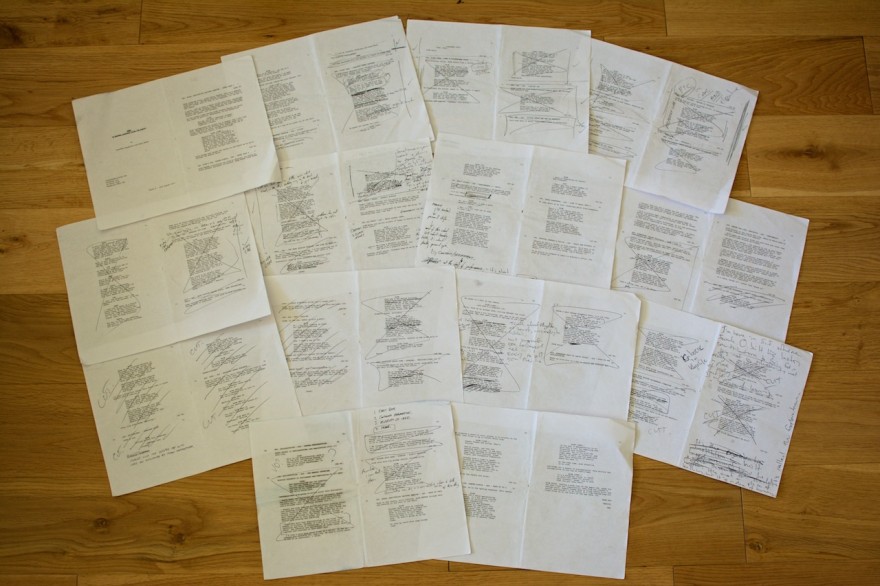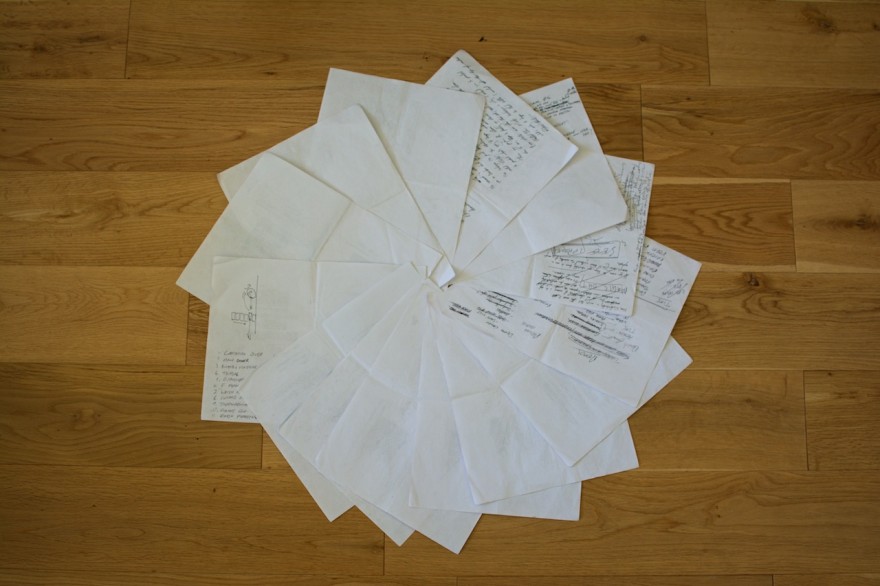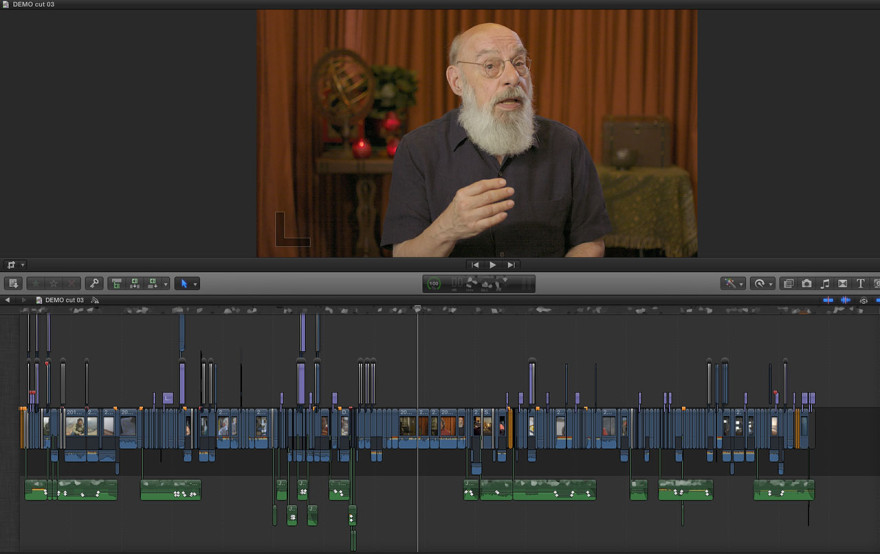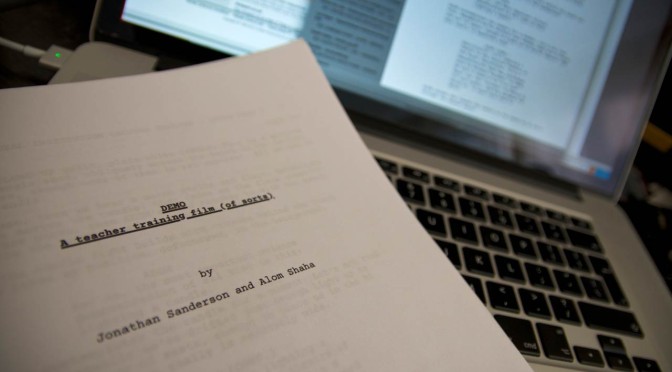Traditionally, video production is split into three phases, imaginatively called ‘pre-production,’ ‘production’ and … wait for it … ‘post-production.’ For a field which depends on imagination, film-making jargon can be spectacularly tedious, so we try to make ourselves feel more important by corrupting our own jargon. Thus, you’ll often hear the phases referred to as things like ‘prep,’ ‘shoot’ and ‘post,’ respectively.
So it comes to pass that I write a blog post titled ‘Post.’ Oh ho ho, how terribly droll.
We returned from the US with something like 850 video clips and a script which looked like this:

There’s even more scrawl on the back:

…of some of the pages, anyway.
So the next thing is turning all this stuff into a film. Ah yes, you see: everything that’s happened up to this point is simply gathering raw material. Films are made (and often broken) in the edit. So the first thing is to work out which bit of footage matches up with which bit of script.
Now, you’d think there’d be a cunningly clever way of doing this automatically, and indeed there are several. But they all require more pairs of hands on location than we had at our disposal, and hence we did it the old-fashioned way: I watched 850 clips and labelled up each by hand. If that sounds tedious… well, yes. It is. Very tedious.
Once done, however, actually bolting the film together is reasonably quick. Until I get to a bit of script which reads “Moody montage travel sequence” or “Big impact crash arrival in Vegas”. Easy to write, but now I have to work out how the material I’ve shot does that. Feature films invest months of time and entire creative departments in pre-visualising everything they’re going to do before they do it for real, while on a project like this you pretty much jump out of the car and hit record. Thus, the ‘assembly’ stage of post involves a fair amount of wild-eyed staring at footage in a panic of fear that the stuff you’ve shot isn’t going to pull together in anything like a coherent manner.
Editing is a roller-coaster ride. If you like your coasters tediously painstaking and with an awful lot of mouse clicks, at least.
There’s an old rule-of-thumb for writers which suggests 1,000 words per day is close to the limit of what’s sustainable while maintaining reasonable quality, and I’ve long reckoned that the video editors’ equivalent is about 100 edits. Which suggests a rather lower word:picture exchange rate than another piece of received wisdom.

But hey, four days and 400 edits later, and I have a watchable film. Oh, there are bits missing (we haven’t shot quite all of it yet), but you can hit ‘play’ and make sense of it all. Bits of it are quite stylish. None of it feels horribly unfinished, apart from the caption overlays reminding me of things to fix. So we’re nearly done, right?
Uhh… no. Missing bits aside, there’s still a huge amount of work. Exposure and colour correction, audio sweetening, music mixing, captions and graphics layers – loads still to do. But more importantly, we need to sit back from it for a few days and get some perspective. Right now we’re pretty happy with it, but there are inevitably some sections which work better than others and we’ve some big decisions to make about pacing and how much ‘road trip’ larking about should go into the film.
So in the meantime, I’ve turned my attention back to the individual demo films we shot before we left for the US, and the couple we still have to shoot. Oh, you didn’t think we’d forgotten those, did you?


One thought on “Post”